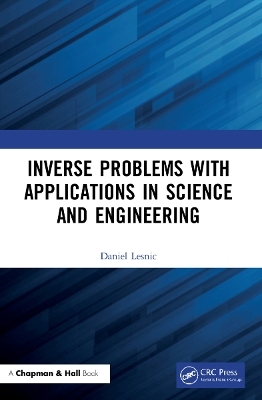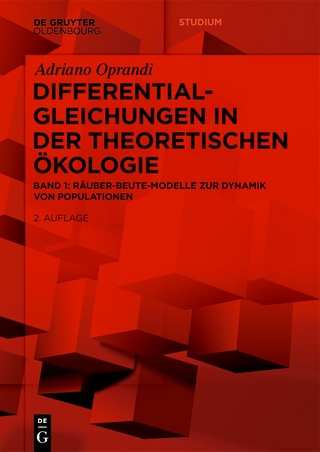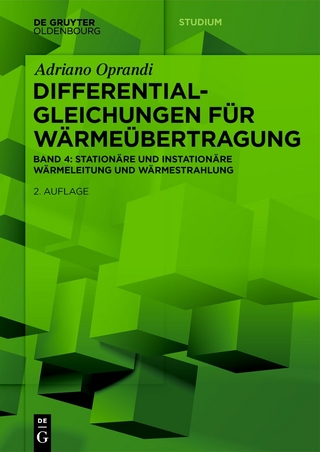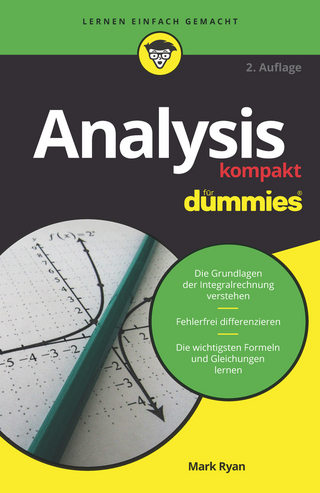
Inverse Problems with Applications in Science and Engineering
Chapman & Hall/CRC (Verlag)
978-1-032-12538-1 (ISBN)
Driven by the advancement of industrial mathematics and the need for impact case studies, Inverse Problems with Applications in Science and Engineering thoroughly examines the state-of-the-art of some representative classes of inverse and ill-posed problems for partial differential equations (PDEs). The natural practical applications of this examination arise in heat transfer, electrostatics, porous media, acoustics, fluid and solid mechanics – all of which are addressed in this text.
Features:
Covers all types of PDEs — namely, elliptic (Laplace’s, Helmholtz, modified Helmholtz, biharmonic and Stokes), parabolic (heat, convection, reaction and diffusion) and hyperbolic (wave)
Excellent reference for post-graduates and researchers in mathematics, engineering and any other scientific discipline that deals with inverse problems
Contains both theory and numerical algorithms for solving all types of inverse and ill-posed problems
For the past 30 years, Daniel Lesnic (PhD 1995, Leeds University, Professor in Applied Mathematics since 2008) has worked on a diverse range of industrial and environmental mathematical inverse problems which have involved close and lasting contact with various scientists, engineers and experimentalists, both nationally and internationally. Topics include heat and mass transfer, porous media, rock mechanics, elasticity, fluid flow, bio-heat conduction, mechanics of aerosols and acoustics, with particular applications in the oil, nuclear and glass industries, medicine, corrosion engineering, river pollution, thermal barriers and anti-reflective coatings. Professor Lesnic is the Associate Editor of the Journal of Inverse and Ill-Posed Problems, Inverse Problems in Science and Engineering and the IMA Journal of Applied Mathematics and has published over 400 papers (http://www1.maths.leeds.ac.uk/applied/staff.dir/lesnic/papers.html) in applied mathematics, edited three conference proceedings and was the Guest Editor of several journal issues on inverse problems. He is also a member of the London Mathematical Society (LMS) and the Eurasian Association for Inverse Problems.
1. Introduction. 1.1. Classification of inverse problems. 1.2. Systems of linear algebraic equations. 1.3. Regularization methods. 2. Inverse boundary-value problems. 2.1 Cauchy problem for the Laplace equation. 2.2. Cauchy problem for the Stokes system. 2.3. Cauchy-type problems for the biharmonic equation. 2.4. Cauchy problems for the heat equation. 2.5. Conclusions. 3. Inverse initial-value problems. 3.1. Quasi-reversibility methods. 3.2. Logarithmic convexity methods. 3.3. Non-local initial-value methods. 4. Space-dependent heat sources. 4.1. Space-dependent heat source identification. 4.2. Simultaneous identification of the space-dependent heat source and initial temperature. 5. Time-dependent heat sources. 5.1. Time-dependent heat source identification. 5.2. Non-local variants. 6. Space- and time-dependent sources. 6.1. Additive space- and time-dependent heat sources. 6.2. Additive space- and time-dependent heat sources. Integral observations. 6.3. Multiplicative space- and time-dependent source. 7. Inverse wave force problems. 7.1. Determination of a space-dependent force in the one-dimensional wave equation from Cauchy data. 7.2. Determination of the force function in the multi-dimensional wave equation from Cauchy data. 7.3. Determination of a space-dependent force function from final or time-averaged displacement data. 8. Reconstruction of interfacial coefficients. 8.1. Introduction. 8.2. Mathematical formulation. 8.3. Conjugate gradient method (CGM). 8.4. Numerical results and discussions. 9. Identification of constant parameters in diffusion. 9.1. Homogeneous and isotropic diffusion. 9.2. A two-dimensional tracer dispersion problem. 9.3. Determination of constant thermal properties. 10. Time-dependent conductivity. 10.1. Identification of the time-dependent conductivity. 10.2. Identification of the time-dependent conductivity of an inhomogeneous diffusive material. 10.3. Finding the time-dependent diffusion coefficient from an integral observation. 11. Space-dependent conductivity. 11.1. Reconstruction of a permeability function from core measurements and pressure data. 11.2. Discontinuous anisotropic conductivity. 11.3. Reconstruction of an orthotropic conductivity. 12. Nonlinear conductivity. 12.1. Determination of nonlinear thermal properties. 12.2. Nonlinear and heterogeneous conductivity. 13. Anti-reflection coatings. 13.1. Mathematical model and analysis. 13.2. Numerical implementation. 13.3. Conclusions. 14. Flexural rigidity of a beam. 14.1. Distributed parameters in beam-type systems. 14.2. The comparison model method. 14.3. Determination of the flexural rigidity of a beam from limited boundary measurements.
| Erscheinungsdatum | 04.11.2021 |
|---|---|
| Zusatzinfo | 18 Tables, black and white; 64 Line drawings, black and white; 64 Illustrations, black and white |
| Sprache | englisch |
| Maße | 156 x 234 mm |
| Gewicht | 512 g |
| Themenwelt | Mathematik / Informatik ► Mathematik ► Analysis |
| ISBN-10 | 1-032-12538-1 / 1032125381 |
| ISBN-13 | 978-1-032-12538-1 / 9781032125381 |
| Zustand | Neuware |
| Informationen gemäß Produktsicherheitsverordnung (GPSR) | |
| Haben Sie eine Frage zum Produkt? |
aus dem Bereich


